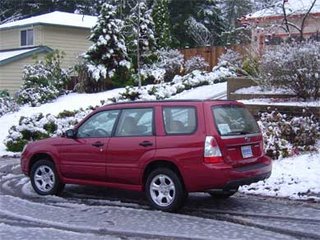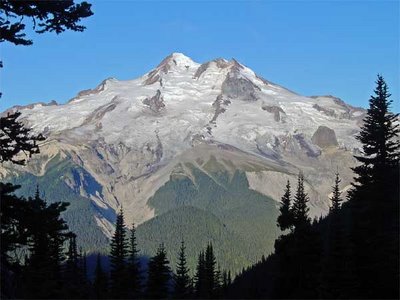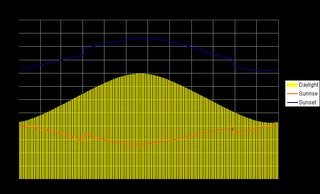The
Olympic National Park has released, for public comment, its Draft General Management Plan and Environmental Impact Statement (Draft GMP/EIS), the first management plan draft since 1976. The comment period has been extended to Sept. 30. I’m interested in the Park’s plans as an avid hiker and seeker of wilderness, and as a citizen, in a sense an owner of this incredible resource, I have an interest in its continued protection in the future. So, yesterday, I read through much of the draft plan (although I read some sections more closely than others) and will write about it here in three segments: a description of my reading of the plan, a description of my conclusions from the reading and from some other perspectives that I’ve seen, and, finally, a draft of the comments I will make to the Park Service’s planning process.
The draft Plan is a remarkable document, over 400 pages all told, containing a wealth of information about the park – its history, landforms, ecology, and operations. The analyses of the alternatives presented, I think, were thoughtful, well written, and useful. I applaud the planners and everyone involved in the years-long effort to think about the future of the Park and to write up plans its future.
For those not familiar with Olympic National Park, it occupies “the central core of the
Olympic Peninsula, along with a narrow strip along the peninsula’s Pacific Coast.” (
Draft GMP/EIS. Page 4.) It is recognized as a
World Heritage Site by UNESCO. In its
evaluation of the Park, UNESCO states:
Olympic National Park is the best natural area in the entire Pacific Northwest, with a spectacular coastline, scenic lakes, majestic mountains and glaciers, and magnificent temperate rain forest; these are outstanding examples of on-going evolution and superlative natural phenomena. It is unmatched in the world.
The draft Plan notes (page 9) that the enabling legislation of Olympic National Park (Act of June 29, 1938, 35 Stat. 2247) “states that Olympic National Park is ‘set apart as a public park for the benefit and enjoyment of the people.’” And that the “House Report 2247 lists the potential benefits and enjoyments of the park. According to the House report, the
purpose of Olympic National Park is to
preserve for the benefit, use, and enjoyment of the people, the finest sample of primeval forests of Sitka spruce, western hemlock, Douglas fir, and western red cedar in the entire United States; to provide suitable winter range and permanent protection for the herds of native Roosevelt elk and other wildlife indigenous to the area; to conserve and render available to the people, for recreational use, this outstanding mountainous country, containing numerous glaciers and perpetual snow fields, and a portion of the surrounding verdant forests together with a narrow strip along the beautiful Washington coast.”
The draft Plan lays out four alternatives: A, the status-quo; B, which emphasizes “natural and cultural resource protection;” C, in which “park management would emphasize visitor opportunities;” and D, the preferred alternative, which balances elements of all of the other alternatives.
This dual responsibility noted above – to protect and preserve
and to allow and facilitate use and enjoyment – is a key to reading the draft Plan and to understanding its conclusions and recommendations. I entered this reading with a bias toward extending the protections for the resources in the Park and for expanding the boundaries of the Park where possible. The Alternative B, where this same bias is given its reins and some real thinking about repairing impacts and increasing the Park’s protections and boundaries are considered. The other side of that question is access by the public. As I read more about this alternative, it became clear that I wasn’t likely to give up access to the extent required for Alternative B, a full implementation of which would restrict visitor access in a number of ways, some small and some large. Alternative C, in contrast, provides for significant expansion of access and development in the Park. I didn’t so much like that one, either, as I read it. So, a balancing of these two, might I say extremes, became the lens through which I read the details of the draft Plan. Indeed, that same impulse toward balance, was what produced the planners’ preferred Alternative D.
Each of the alternatives was described and evaluated in many ways. The alternatives were described in terms of their impacts using a set of management or usage zones. These are Development, Day-use, Low-use, River, Inter-tidal reserve, Wilderness trail, Primitive wilderness, and Primeval wilderness. In addition, potential boundary changes were identified for each of the alternatives.
The alternatives were considered against a series of “impact issues” and this evaluation comprised the heart of the analysis. The issues are: Air Quality, Soundscapes, Geologic Processes, Hydrologic Systems, Intertidal Areas, Soils, Vegetation, Fish and Wildlife, Special Status Species, Wilderness Values, Cultural Resources, Visitation, Visitor Opportunities, Information, Orientation, and Interpretation, Visitor Access and Transportation, Socioeconomic Environment, and Park Operations
In addition, they were evaluated against the goals of the National Environmental Policy Act (NEPA). There was a surprise here for me, as Alternative B, the most natural resource-centered option, did not fare as well as I would have expected. A quick review of the goals assigned in the NEPA tells the story. Only the first goal of the six is really focused on the natural world, while the rest talk of balance and use. Clearly, the NEPA is a compromise (as should not be a surprise). For the record, the goals are:
A. Fulfill the responsibilities of each generation as trustee of the environment for succeeding generations.
B. Ensure safe, healthful, productive, and aesthetically and culturally pleasing surroundings for all Americans.
C. Attain the widest range of beneficial uses of the environment without degradation, risk of health or safety, or other undesirable and unintended consequences.
D. Preserve important historic, cultural and natural aspects of our national heritage and maintain, wherever possible, an environment that supports diversity and variety of individual choice.
E. Achieve a balance between population and resource use that will permit high standards of living and a wide sharing of life’s amenities.
F. Enhance the quality of renewable resources and approach the maximum attainable recycling of depletable resources.
Because the scope of the draft Plan considered a great many more topics than I could readily accommodate, I began to focus on these fewer issues: the specifics of Alternative B, C, and D, especially in how they affected the protection of natural resources and processes, providing orientation and education for visitors, and providing visitor access and recreational opportunities; and how they differed on boundary changes.
Throughout my reading of the material, I was impressed by the scope of the work, the care that went into describing and considering the alternatives, and the clarity with which they were presented. Anyone interested in the future of Olympic National Park should, at least, read the Summary document and consider commenting on the proposed alternative.
All of the documents are available on-line, including the
Draft GMP/EIS and the
Maps of the alternatives. Review copies are also available locally (around Olympia) at The Evergreen State College Daniel J. Evans Library; at the Timberland Regional Library branches in Aberdeen, Amanda Park, Hoodsport, and Hoquiam; and in Shelton at the William G. Reed Public Library. A full list of locations with review copies is found
here.
Should you wish to submit a comment to the planning process, visit
this page for the form. Or, you can send a letter (on paper!), using the comment form and address
here.


